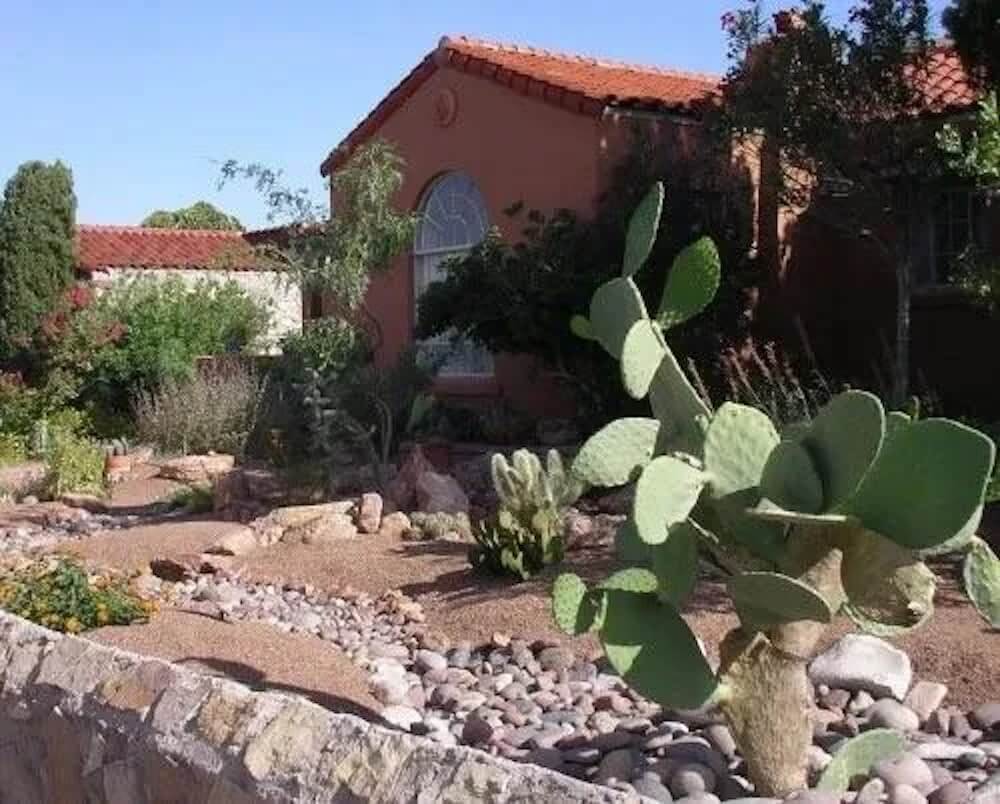Xeriscaping, described here by EcoWatch, is a low-maintenance landscaping option that is making waves, especially in desert areas where water is scarce or strictly rationed.
This solution is a great alternative to traditional lawns, but it hasn't won over everyone, as shown by a debate that broke out on a Reddit post sharing pictures of xeriscaped gardens.


"Rather than planting grass and wasting water where it won't grow, they embrace the desert terrain," the OP wrote, noting the pictures were taken in El Paso, Texas.
The OP shared several photos of yards that were built using a range of different-sized rocks and native plants, including various cacti and succulents. The yards also included native flowers and trees.
The post sparked a debate. Some commenters were not sure about the rocks, but others pointed out that they serve a purpose by keeping the dirt in place and preventing water from evaporating too quickly.
Traditional monoculture lawns cover over 40 million acres of land in the U.S., per the Princeton Student Climate Initiative, and there is a significant industry that exists to sell you products to keep your lawn looking neat and well-cared for. Lawn care requires equipment, seeds, and chemicals, as well as significant time and money to maintain. And this doesn't even consider the cost of irrigation, especially if you live in a dry climate like the desert.
Switching to a natural lawn or considering xeriscaping are great alternatives to expensive, resource-draining traditional lawns. Natural lawns use plants like clover and buffalo grass to create a green space. These plants are drought-hardy, so they require little watering and don't need to be fertilized often. They don't need to be mowed much, if at all, which means you can rely less on your gas-guzzling mower.
Incorporating native plants into your garden is also a great way to support local wildlife, including pollinators. Pollinators, such as birds, bees, bats, and butterflies, are really important for food production. Unfortunately, though, their numbers are in decline due to habitat destruction, among other things. Traditional monoculture lawns don't provide much habitat for wildlife, but native plants provide both shelter and food, which is great for protecting pollinator populations.
Commenters were happy to share their thoughts on the garden. "It looks nice and I don't think you have to do much weeding!" one person wrote.
🗣️ If you were to switch from a grass lawn to a more natural option, which of these factors would be your primary motivation?
🔘 Making it look better 🌱
🔘 Saving money on water and maintenance 💰
🔘 Helping pollinators 🐝
🔘 No way I ever get rid of my lawn 🚫
🗳️ Click your choice to see results and speak your mind
"Beautiful and practical," wrote another.
Join our free newsletter for easy tips to save more and waste less, and don't miss this cool list of easy ways to help yourself while helping the planet.









